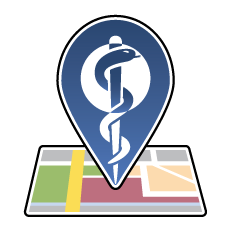SOURCE: LANDGEIST
Map: Landgeist (@landgeist)
Data: United States - US Centers for Disease Control & Prevention (@CDCgov), Asia & Europe - Sleep Cycle (@sleepcycle)
Website: Short Sleep in the US, Sleep Duration in Europe, Sleep Duration in Asia
Beyond The Map: National Sleep Foundation’s Sleep Awareness Week, World Sleep Society’s World Sleep Congress, World Sleep Society’s World Sleep Day 2022
From Landgeist:
Most adults need 7 to 9 hours of sleep. Sleep is an essential part of your overall health. A lot of people still under-estimate how important a good sleeping pattern is for your health. Too little sleep can cause many health problems, including memory problems, a weakened immune system, feelings of depression, weight gain, bad decision-making and a higher chance of conditions like high blood pressure, diabetes or heart attack.
Although the amount of sleep you get is a big influence on the quality of your sleep. There are also several other factors that can improve the quality of your sleep:
Going to bed and waking up at the same time.
Having a relaxing bedtime routine.
Try to exercise regularly
Don’t use any electronic devices at least half an hour before going to bed
Minimize noise and light disruptions in your bedroom and also optimize the bedroom temperature.
UNITED STATES
Sadly, there is no data on the average amount of sleep on the state or county level. On a national level, Americans are getting an average of 7:19 hours of sleep. Which is meeting the required 7 hours of sleep. Although there is no data on the average amount of sleep on the county level, there is data on the percentage of people that sleep less than 7 hours on average. On this map, we can see this data on the county level.
Straight away we can see a very clear difference between the west and the east of the country. The counties in the west, especially in the Great Plains, have the lowest percentages of people that have short sleep. The same goes for the very north-east (Maine, Vermont, New Hampshire) and some parts of Alaska. Population density could be an important factor here.
When it comes to the highest percentages of people with short sleep, four states stand out straight away: Hawaii, Kentucky, Tennessee and West Virginia. All four states look very dark blue. Alabama, Georgia, South Carolina, Florida, Ohio and Michigan also are quite dark blue.
The data for this map comes from the Centers for Disease Control and Prevention and is from 2018. Sadly, the study did not research why people don’t get enough sleep. However, it is likely related to an unhealthy lifestyle and diet.
EUROPE
But how are the different countries in Europe doing when it comes to the amount of sleep? Looking at this map, it seems that most of the Europeans are getting at least 7 hours of sleep. With the exception of Turkey, which is just below 7 hours.
People in Finland and the Netherlands get the most sleep. Both spend an average of 7:37 hours in bed. People in Belgium, Ireland and the UK also get at least 7.5 hours of sleep every day.
ASIA
We can straight away see that this map seems to be almost an inverse of the European map. Where in Europe, only one country didn’t get the recommended minimum 7 hours of sleep. Only one country in Asia actually gets an average of more than 7 hours of sleep. China is the only country where people get an average of more than 7 hours of sleep per night. Countries like Hong Kong and Thailand are quite close to 7 hours of sleep.
This could be because most Asian cities are a lot more densely populated. Asian cities also tend to be a lot noisier, which can disrupt people’s sleep. The tropical climate in south-east is Asia is definitely also not making it easier to sleep.
Japan and South Korea have by far the lowest amount of sleep per night. Both less than 6.5 hours. A probable cause is the high-pressure working culture. In both countries it’s very common to work overtime. Even when work is over, most salarymen will quite often go out for dinner and drinks with their colleagues and boss. Especially in Japan where it’s common for salarymen to go to an Izakaya after work. They stay out until the wee hours and have to be back on time at the office the next morning.




